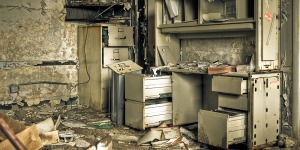
These days, offices generate large quantities of waste which needs to be disposed properly lest it starts hampering the productivity in the office. The waste includes different types of paers, folders, electronic storage devices, furniture, glasses, utensils among other things.
Australia, in fact, has its own Waste Management Association (WMAA) and regularly holds industry events engaging a variety of professionals in this field, along with other stakeholders. These include over three thousand members in the waste and resource recovery industry. It is therefore important to understand and acknowledge the various kinds of waste removal processes and appreciate why they are important in the present day office-running ecosystems.
Paper waste removal
Paper waste removal may look easy, but it is not. When you look at the large volume of paper generated by offices today, you will realize that it is not simply a matter of throwing it in the bin and that there’s much more to it. A company’s role in paper rubbish removal simply does not end by throwing it in a bin allocated for paper trash. Often, the discarded paper has to be shredded thoroughly to ensure that confidential content is not leaked to prying eyes. And, it also has to be recycled which is a way corporations can contribute their bit to environmental conservation.
Plastic waste removal
Plastic waste is generated in abundance at public places with a huge footfall. These include recreational theme parks, malls and other urban hotspots. Recycling plastic is not as easy as recycling paper – refuse plastic is also incredibly dangerous. For example, strong winds can blow plastic packaging material from a roadside into a water body, where it can harm entire ecosystems. Unlike paper, plastic also does not decompose, and is therefore even more dangerous. Until 2012, Australia was exporting 50% of its plastic waste, and most of it was exported to China where it was used for a variety of purposes.
Chemical waste
Chemical waste is produced as a byproduct of many industrial processes. It is extremely dangerous, and needs specialized processes for its removal. For example, if this waste enters into water (via effluent flows), it can instantly poison marine life. This can in turn harm us as we rely on the oceans for a lot of our food supply. Secondly, these harmful toxins (created as byproducts of industrial processes) can also harm us if they enter the water cycle. This is even happening I
These three are the most common kinds of waste. Increase in commercial activity has escalated the production of these wastes, and therefore the waste management sector’s role in Sydney junk removal has become increasingly important – as exhibited on the webpage http://everythingrubbish.com.au/waste-removal/furniture-rubbish-removal.
Thankfully, the waste management sector has also adopted modern scientific techniques in processing such waste. These include pre-emptive policies to check the kinds of toxins produced by industries, a variety of state-of-the-art equipment to measure contamination levels, and the use of protective gear.
Additionally, the sector works closely with the government in recommending policies. These include everything from simple waste management solutions (e.g. different types of dustbins for paper, plastic, metal and their frequency in urban areas) to analyzing living and business trends and how they influence waste generation. Today, corporations like Everything Rubbish are coming with innovative solutions to drive rubbish removal Sydney service.
